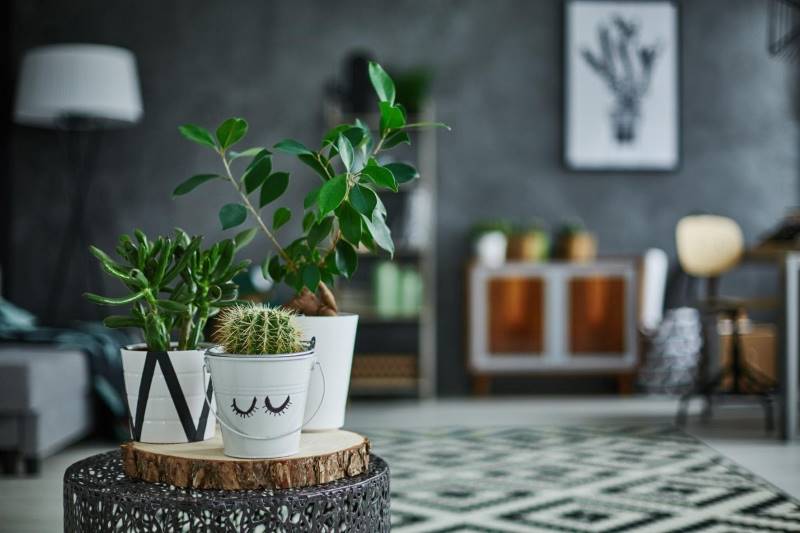 If children or pets are out of the question, what’s the next logical thing you should consider adding to your home? A plant! Many Americans are now riding the indoor plant bandwagon, with market sales totaling around $1.7 billion.
If children or pets are out of the question, what’s the next logical thing you should consider adding to your home? A plant! Many Americans are now riding the indoor plant bandwagon, with market sales totaling around $1.7 billion.
However, plants can be a surprising amount of work for the unprepared. So how can you avoid the idea of failure altogether? What are some of the hardiest, most resilient plants that won’t mind if you ignore them for a while?
Keep reading to learn about five of the best indoor plants for beginners, as well as different popular ones that you might want to stay away from.
1. Snake Plant
Snake plants are some of the best household plants for people that are still wrapping their heads around the concept of taking care of another living creature. With green leaves and bright yellow margins, sansevieria trifasciata is the most famous.
Snake plants are resilient and capable of surviving in different locations, from offices and living rooms, to bathrooms and bedrooms. They don’t require much maintenance, but you will have to give them enough light, as well as water them from time to time.
2. Succulents
Is space a luxury that you can’t afford in your house or apartment? If so, potted succulents can be a great option. You can place these tiny guys on tabletops, windowsills, and any other surface you have available.
Aside from being convenient, succulents are also incredibly hardy. Most of them are desert plants, which means they’re used to going long periods of time without water. Some of the most popular varieties include aloe, echeveria rosettes, and agave.
3. ZZ Plant
The ZZ plant is another resilient plant that can survive hostile conditions without a problem. Low light, changes in the environment, and you forget to check if it needs water for two weeks are all unimportant to this plant.
The ZZ plant, or Zanzibar Gem, doesn’t need much sunlight, and actually shys away from direct sunlight. Depending on the conditions, it also shouldn’t require water more than twice a month.
4. Pothos Plant
One of the hardiest plants, the pothos plant, or Epipremnum pinnatum, is a great choice for beginners. The plant has many other names, such as money plant, hunter’s robe, and devil’s ivy, all of which attest to its resilience.
Pothos plants provide your space with long vines and vivid green leaves. You only need to water it once a week, and it prefers to be out of direct sunlight. You can also choose whether you want to grow the pothos plant in water or dry soil.
5. Jade Plant
Jade plants are a type of succulent great for newbies. They come with oval-shaped leaves reminiscent of trees, helping bring a natural feeling into your home. Being a succulent means that they’re tough, hardy, and can live for a long time.
Jade plants only need a few hours of direct sunlight a day, although younger ones do require a bit more. As is the case with most plants, feel how dry the soil is to know whether or not you should water it.
Popular High-Maintenace Plants to Stay Away From
While the five previous plants are easy to care for, the following plants are needy and high-maintenance. Although they’re popular, you might want to stay away from them if you’re a newbie. Instead, check out some of the previous plants, or the ones mentioned in this post.
1. Fiddle-Leaf Figs
Who would have guessed that something so trendy could be so finicky and difficult to care for? While fiddle-leaf figs are beautiful to behold, they aren’t easy to take care of, meaning that beginners might want to choose something easier.
Too much sun and the leaves will wilt and turn brown, while too little will prevent fiddle-leaf figs from growing. They don’t like changes in environment, so forget about moving them from one place to another. They also don’t like dryness, requiring you to use a mister or humidifier to keep their leave moist.
2. Orchids
Orchids are popular on account of their vibrant colors. Yet while many people like them, their high-maintenance needs prove too difficult for even some of the best gardeners to keep up with.
Different varieties of orchids have different needs, but they should all have access to light that comes from the north or the east. This will be indirect, but enough to help them grow. You should also make sure not to water them too much, as they can become waterlogged.
Aside from worry about soil, you’ll also need to prune orchids to encourage growth, a process that turns many people off.
3. Zebra Plants
If you live in a place that experiences colder temperatures at some point throughout the year, get ready to crank the heat. Zebra plants are beautiful but prefer temperatures of over 70 degrees Fahrenheit at all times.
As they come from tropical climates, they also need enough moisture to thrive. In most cases, this is around 60% to 70%. In fact, the soil should always be damp, which means that you should be ready for some babysitting.
Get Started With These Best Indoor Plants for Beginners
If you’ve never owned an indoor plant before, it’s a good idea to start small. Choose one of the best indoor plants for beginners mentioned in this guide, and you can be certain that it’ll grow and thrive no matter how many times you forget to water it.
Do you now have a better understanding of the best indoor plants to grow? Before you start planting, take a moment to check out some of our other blog posts for more guides and tips.




